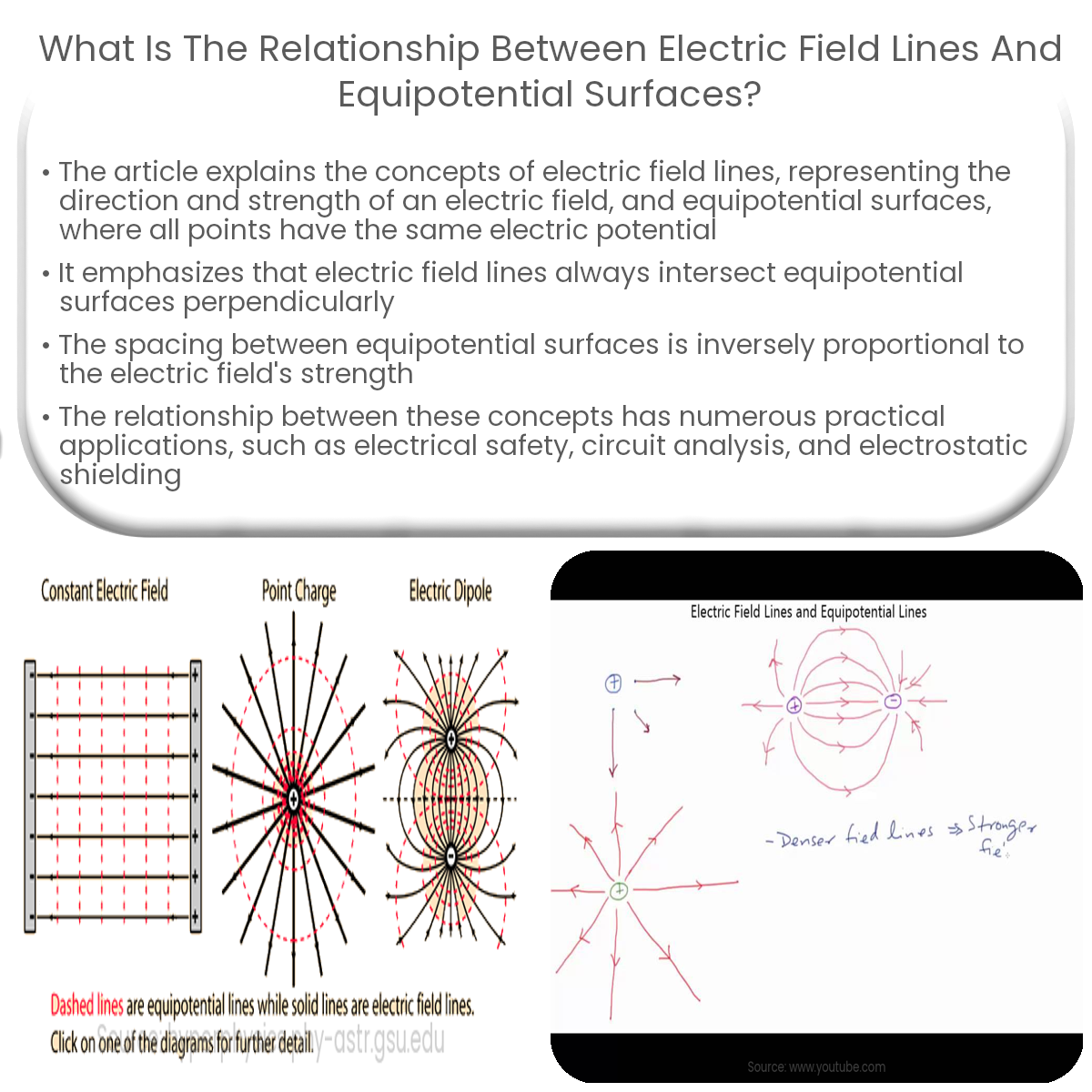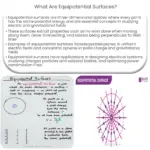Electric field lines intersect equipotential surfaces perpendicularly, with surface spacing indicating field strength and direction.
Electric Field Lines and Equipotential Surfaces
In the study of electromagnetism, electric field lines and equipotential surfaces are two key concepts that help us visualize and understand the behavior of electric fields. This article explores the relationship between electric field lines and equipotential surfaces.
Understanding Electric Field Lines and Equipotential Surfaces
Electric field lines represent the direction and strength of an electric field, with the tangent to the line at any point indicating the field’s direction. Equipotential surfaces, on the other hand, are surfaces in which every point has the same electric potential. No work is done by the electric field on a charge when it moves along an equipotential surface.
Relationship Between Electric Field Lines and Equipotential Surfaces
The relationship between electric field lines and equipotential surfaces can be described by the following properties:
- Perpendicular Intersection: Electric field lines always intersect equipotential surfaces at a right angle (90 degrees). This is because the force exerted by the electric field on a charge is in the direction of the field lines, while no work is done when the charge moves along an equipotential surface. The perpendicular intersection ensures that the field does not perform any work on the charge along the equipotential surface.
- Spacing and Field Strength: The spacing between equipotential surfaces is inversely proportional to the strength of the electric field. A stronger electric field will have closely spaced equipotential surfaces, while a weaker field will have more widely spaced surfaces. This is because the electric field’s strength is related to the potential difference between adjacent equipotential surfaces.
- Uniform vs Non-uniform Fields: In a uniform electric field, equipotential surfaces are evenly spaced planes parallel to one another. In a non-uniform field, however, equipotential surfaces can have irregular shapes, adapting to the varying field strength and direction.
Applications of the Relationship
Understanding the relationship between electric field lines and equipotential surfaces has several practical applications, including:
- Electrical Safety: Equipotential surfaces can be used to design grounding systems that ensure safety in electrical installations by keeping potential differences to a minimum.
- Circuit Analysis: The concepts of electric field lines and equipotential surfaces can help analyze and solve problems related to electric circuits, such as voltage distribution and current flow.
- Electrostatic Shielding: Equipotential surfaces can be utilized to design electrostatic shields that protect sensitive electronic equipment from external electric fields.
In conclusion, the relationship between electric field lines and equipotential surfaces is crucial for understanding the behavior of electric fields and has a range of practical applications in various fields.




